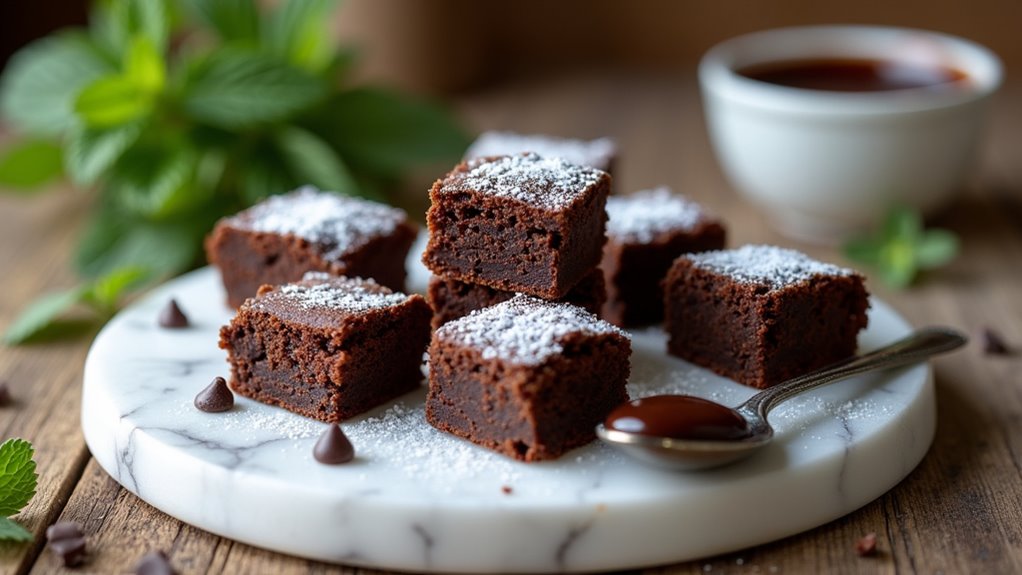One evening at the restaurant, a regular customer asked me about making aioli for her dinner party. “Everything tastes bland lately,” she sighed, pushing around her roasted vegetables. I smiled, knowing exactly how to help. I shared my secret sage aioli recipe – a Mediterranean twist that transformed her simple spread into the talk of the party. Now she swings by weekly, not just for dinner, but to stock up on fresh sage from our herb garden for her own batches.
History
While aioli’s origins can be traced back to the Mediterranean region, particularly Provence and Catalonia, its evolution as a sauce has spanned centuries.
Traditional garlic aioli began as a simple emulsion of garlic and oil, reflecting the region’s culinary heritage.
The introduction of sage into aioli marked a significant development in Mediterranean cooking.
I’ve found that fresh sage’s incorporation into homemade aioli emerged as cooks began experimenting with local herbs.
This adaptation transformed the classic garlic aioli into a more complex condiment, combining the pungent notes of garlic with sage’s earthy, aromatic qualities.
Recipe

Sage aioli is a sophisticated condiment that combines the traditional creamy goodness of aioli with the aromatic, earthy notes of fresh sage. This homemade version elevates everyday dishes with its rich, herbaceous flavor profile and smooth texture, making it a versatile addition to any culinary repertoire.
The key to creating the perfect sage aioli lies in achieving the right balance of ingredients and proper emulsification technique. While traditional aioli recipes call for hand-whisking, using a food processor or immersion blender can help create a more stable emulsion while incorporating the fresh sage leaves more effectively.
- 2 large egg yolks, room temperature
- 4-5 fresh sage leaves
- 2-3 cloves roasted garlic
- 1 cup olive oil
- 1 tablespoon lemon juice
- 1/2 teaspoon Dijon mustard
- 1/4 teaspoon salt
- 1/8 teaspoon white pepper
In a food processor, combine egg yolks, chopped sage leaves, roasted garlic, Dijon mustard, and lemon juice. Process until well combined. With the machine running, very slowly drizzle in the olive oil in a thin, steady stream until the mixture thickens and emulsifies. This should take about 3-4 minutes.
Once all the oil is incorporated, add salt and white pepper, pulse to combine, and adjust seasonings to taste. For best results, allow the aioli to rest in the refrigerator for at least 30 minutes before serving to let the flavors meld.
If the aioli becomes too thick, thin it with a few drops of warm water or lemon juice. Always ensure your ingredients are at room temperature before starting, as this helps create a more stable emulsion. If the aioli breaks during preparation, start with a fresh egg yolk in a clean bowl and slowly whisk in the broken mixture to re-emulsify.
How to Serve It
Once you’ve prepared this versatile condiment, let’s explore the many ways to serve it.
I recommend using sage aioli as a dipping sauce for roasted vegetables to enhance their natural flavors. Spread it generously on sandwiches with pork or turkey for an elevated lunch experience.
For a delicious pairing, serve sage aioli alongside sweet potato fries, creating a perfect balance of sweet and savory.
When grilling meats or vegetables, drizzle the aioli over the top just before serving.
I also suggest adding it to your charcuterie board with cured meats and crusty bread for an elegant presentation.
Final Thoughts
As you master this classic condiment, remember that fresh ingredients and proper storage make all the difference in creating exceptional sage aioli. Use fresh lemon juice rather than bottled for bright citrus notes.
Store your sage aioli in an airtight container and consume it within one week for the best flavor profile. While garnishing with crispy fried sage and a drizzle of olive oil adds visual appeal, the sauce itself should remain smooth and creamy.
Always season with salt to taste, adjusting the flavors until they’re perfectly balanced. Trust your palate to guide the final seasoning adjustments.
Want to learn more about Aioli? Check out our article on Roasted Garlic Aioli recipe.



